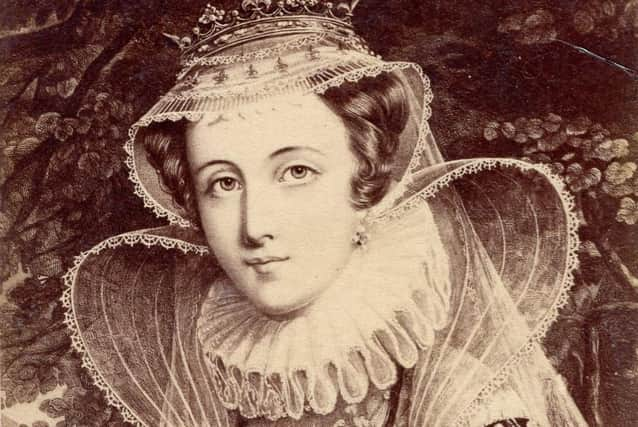Unsolved mysteries of Edinburgh: Queen Mary's Tree at Craigmillar


This giant sycamore achieved prominence in mid-Victorian times and was said to have been planted by Mary Queen of Scots during her stay at Craigmillar, in the presence of Rizzio and other loyal retainers. It became quite a tourist attraction but already by 1881 showed signs of decay, when the owner of Craigmillar Castle gave instructions to have the top cut off.
In 1886, Queen Victoria was given a slip from Queen Mary’s Tree in a flower-pot, and a picture of it, when she was staying at Dalkeith Palace. The Queen gave instructions for iron railings to be put up to protect the old tree, and the loyal people of Edinburgh obeyed her.
Advertisement
Hide AdAdvertisement
Hide AdAfter the distinguished royal association of Queen Mary’s Tree had become known, more than 100 patriotic Scots, and people from all over the Empire, wrote to the gardener at Craigmillar asking for cuttings from it.When Reginald Phillimore saw Queen Mary’s Tree in early Edwardian times, it was still an impressive tree. With his usual attention to detail, he depicted some ancient cottages nearby, known as Little France since they had once been inhabited by the French retinue of Mary Queen of Scots, during her stay at Craigmillar Castle. A shepherd with six sheep and a sheepdog are just passing the tree, and an old woman watches them go by.
The Little France cottage to the right is still standing, and looks very much like it did when seen by Phillimore, but the others have been extensively rebuilt. When featured by the Edinburgh Evening News in 1924, Queen Mary’s Tree was rather diseased-looking. An old Edinburgh man contrasted it current decayed state with what it had been like when he was young: it had stood very tall and extended over the road into Mrs Fergie’s wee coo park.
The iron railings erected at the order of Queen Victoria were still there, along with a plaque saying that the tree had been planted by Mary Queen of Scots about 1561. Tourists from all over the world still came to see it, and there were saplings growing in the gardens of Windsor and Balmoral. When featured by the Fife Herald in 1939, the old tree was still alive and in reasonable health, but in 1953, it was in an advanced state of decay: only a stump about ten feet high remained inside the iron railings. The plaque was later stolen, and Queen Mary’s Tree was finally removed in 1975; calls to have another tree planted on the site were not acted upon, and the site was soon covered with scrubs and brambles.
As expressed by a Caledonian ‘old poet’:The storms o’time had tried thee sair,But thou was propt wi’ canny care;And nae rude hand would ever dareTo injure thee,Till death’s fell blast laid low and bareQueen Mary’s tree.The legend of Queen Mary’s Tree being planted by the tragic queen’s own hand is substantially flawed, however. Firstly, the only time she resided at Craigmillar Castle was in late 1566, after Rizzio had been murdered at Holyrood. Thus both the story that the tree was planted as early as 1561 andthe account that Rizzio witnessed the planting, must be false. Secondly and more importantly, it was a popular pastime in Victorian times to invent legends about particularly large and old trees.
Advertisement
Hide AdAdvertisement
Hide AdAs a consequence, there are Queen Mary’s Trees all over Scotland, at least ten of them at last count, including a tree trunk kept in the museum of the Society of Antiquaries of Scotland as early as 1827, a famous hawthorn at Duddingston Manor that fell in a storm in 1840, a thorn at Hillhousefield, North Leith, while another Queen Mary’s Thorn used to grow in the gardens of Moray House. It would have taken a frenzied effort from Scotland’s tragic queen to pull off such an arboricultural tour de force, whereas in real life, she is not recorded as planting as much as a tulip.In Victorian times, there was a wish to associate large and ancient trees with some attractive historical character, to bring history alive from purposes of nostalgia, and to provide a living link from the present time to the historical past. The many Queen Mary’s Trees in Scotland are the most striking instances of this, and the one at Craigmillar was the most famous of them all.
Modern Edinburgh is known for its conservationist approach to historic buildings and monuments, and it is strange and blameworthy that no concerted effort was made to save Queen Mary’s Tree at Craigmillar during its period of decay, or at least to plant another tree on the site. Today, the area adjacent to Little France has been taken over by the Royal Infirmary, and the rural road frequented by shepherds and their sheep in Phillimore’s time is today the busy Old Dalkeith Road, where howling ambulances frantically race for the hospital emergency department.
It would take the imaginative mind of a close student of Elliott O’Donnell’s Trees of Ghostly Dread to presume that on foggy autumnal nights, when even the busy hospital sleeps, the spectral branches of a mighty sycamore can still be perceived, dwarfing the remaining cottages in Little France...
From Jan Bondeson’s book Phillimore’s Edinburgh, published by Amberley Publishing
A message from the Editor:
Thank you for reading this article. We're more reliant on your support than ever as the shift in consumer habits brought about by coronavirus impacts our advertisers.
If you haven't already, please consider supporting our trusted, fact-checked journalism by taking out a digital subscription
Comment Guidelines
National World encourages reader discussion on our stories. User feedback, insights and back-and-forth exchanges add a rich layer of context to reporting. Please review our Community Guidelines before commenting.